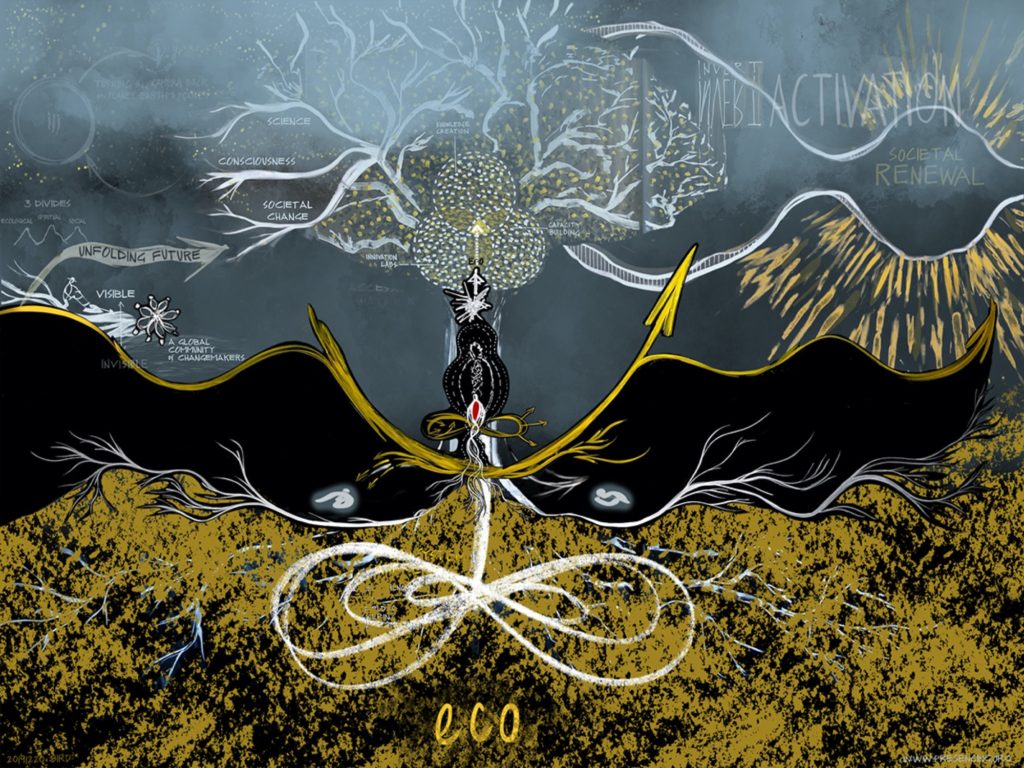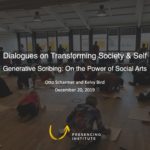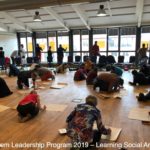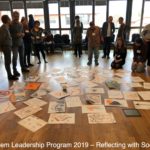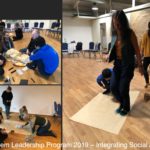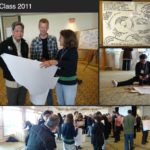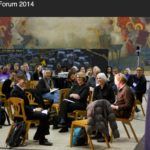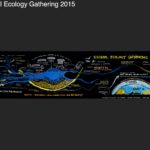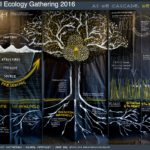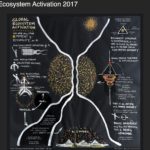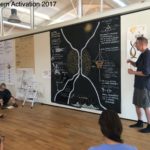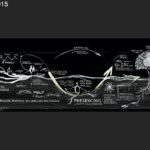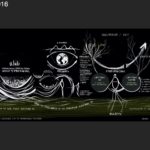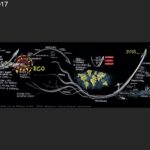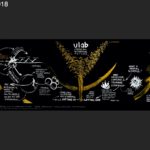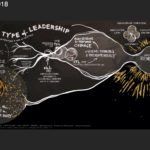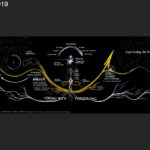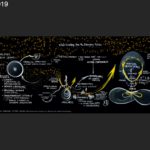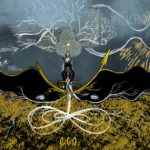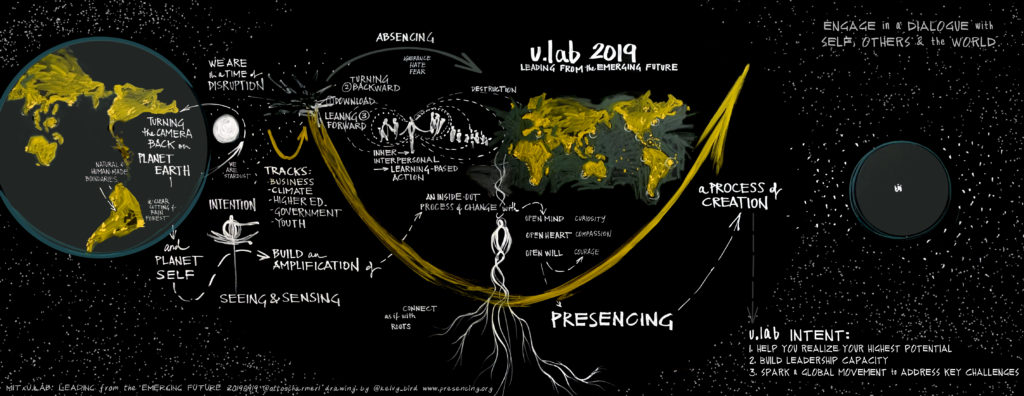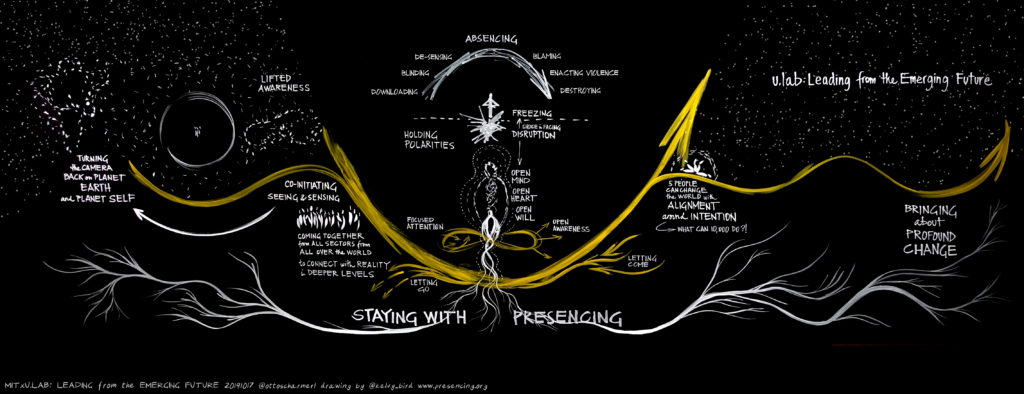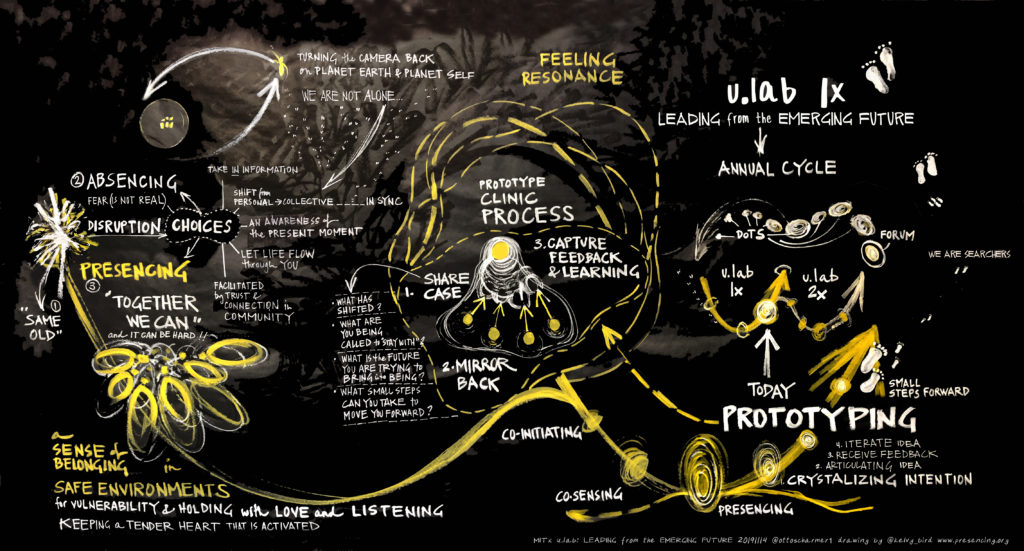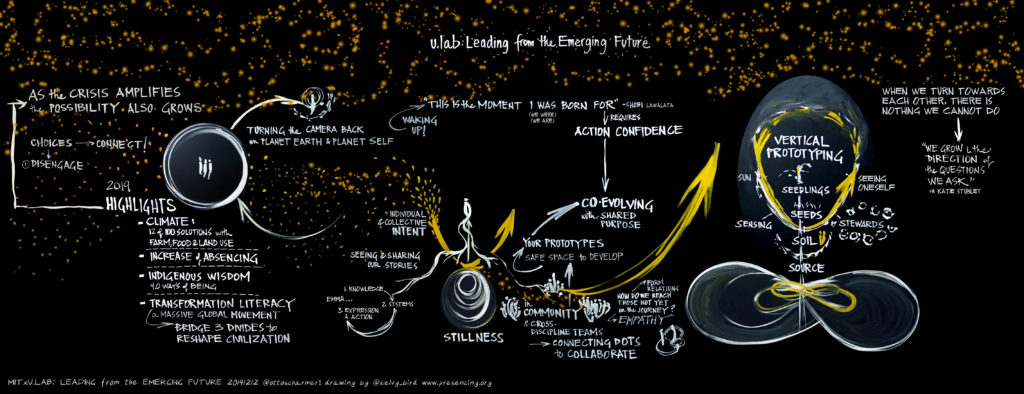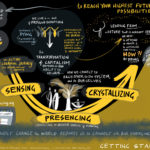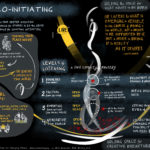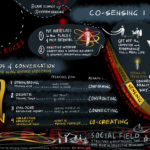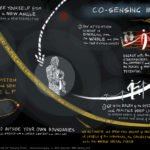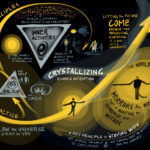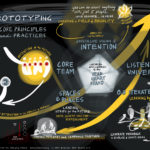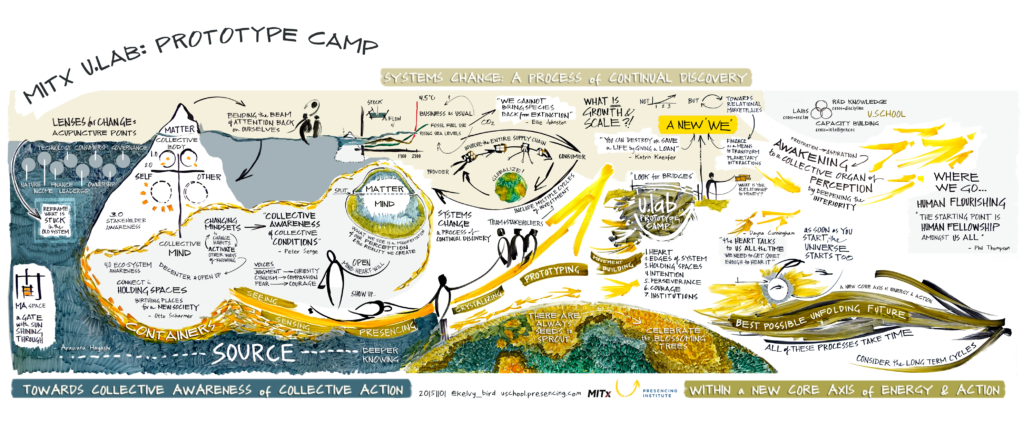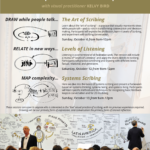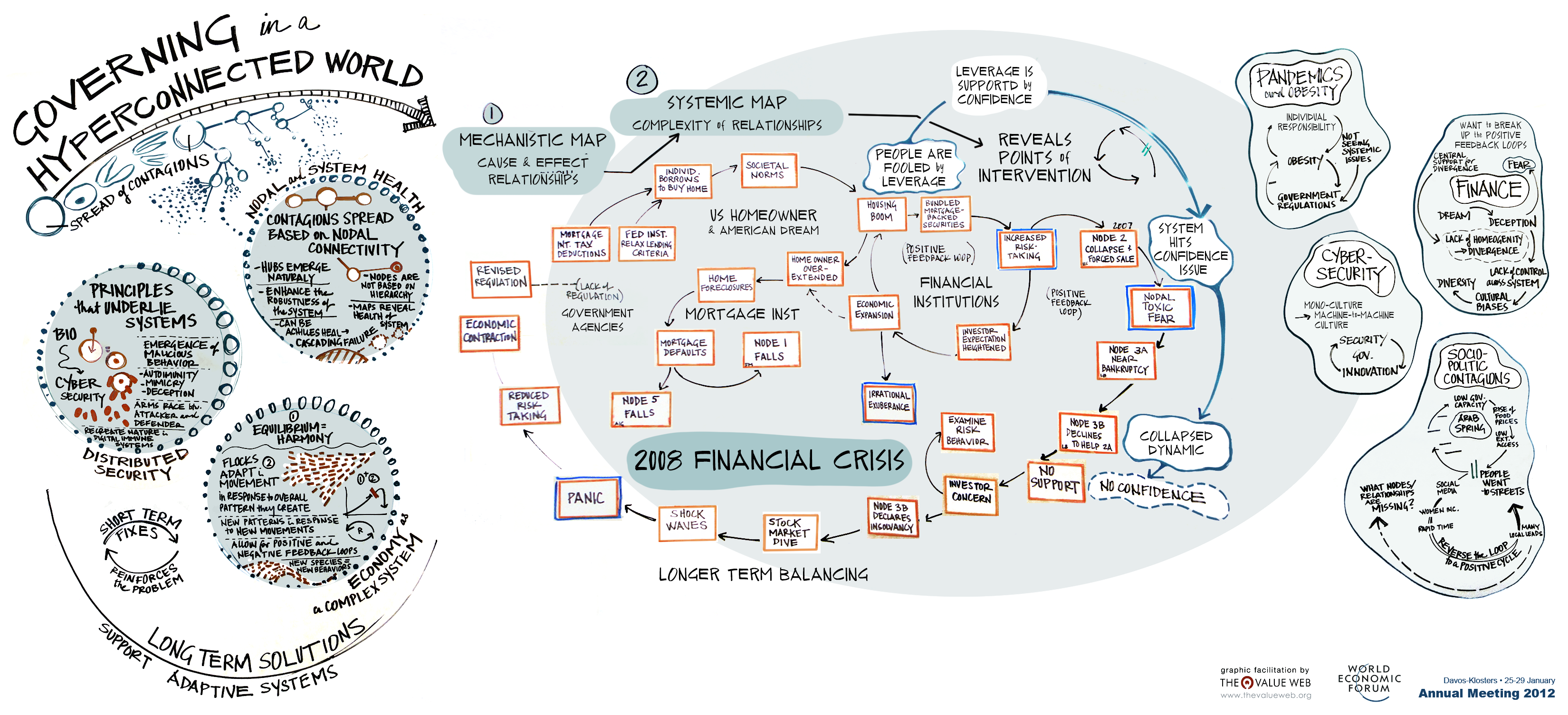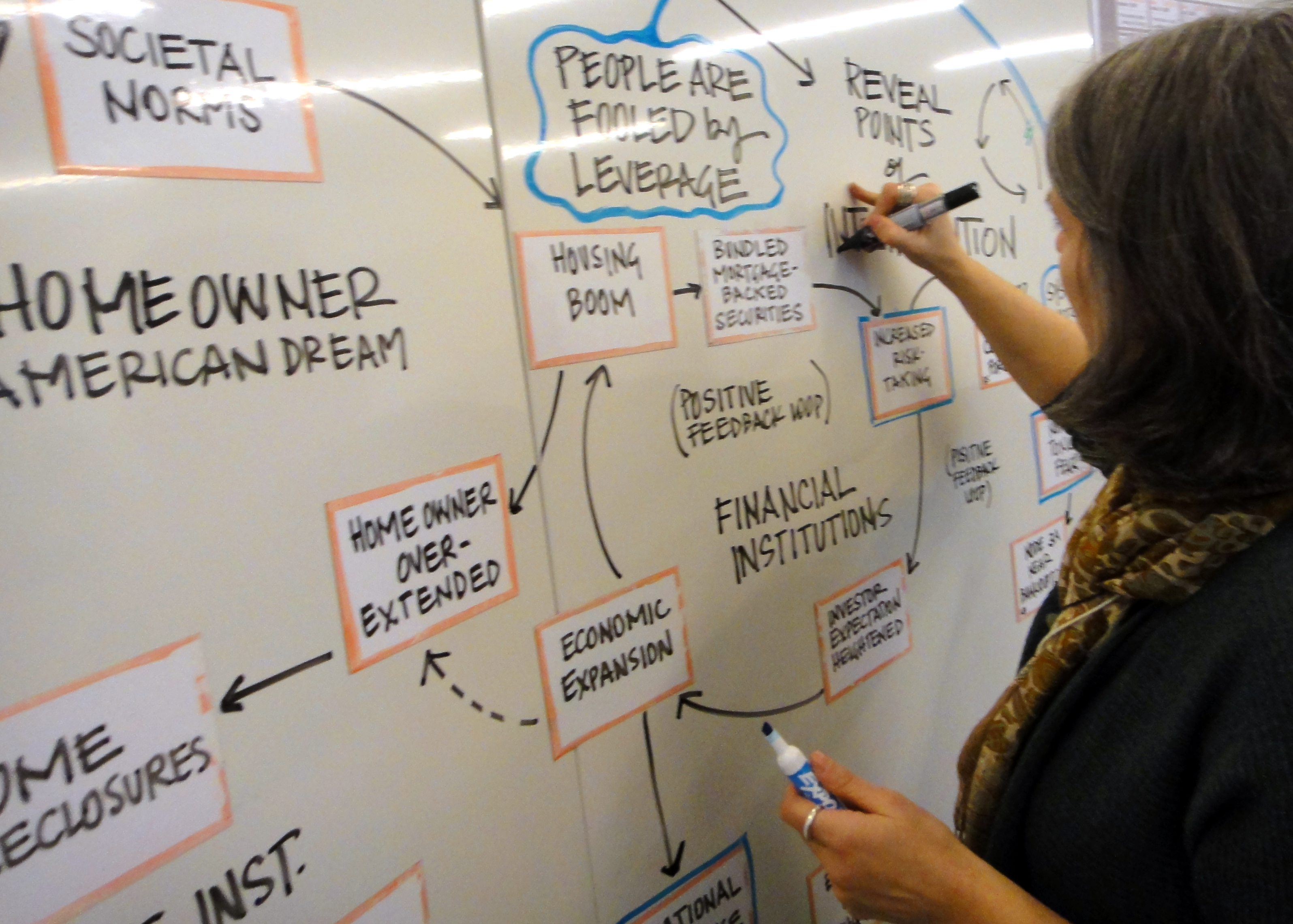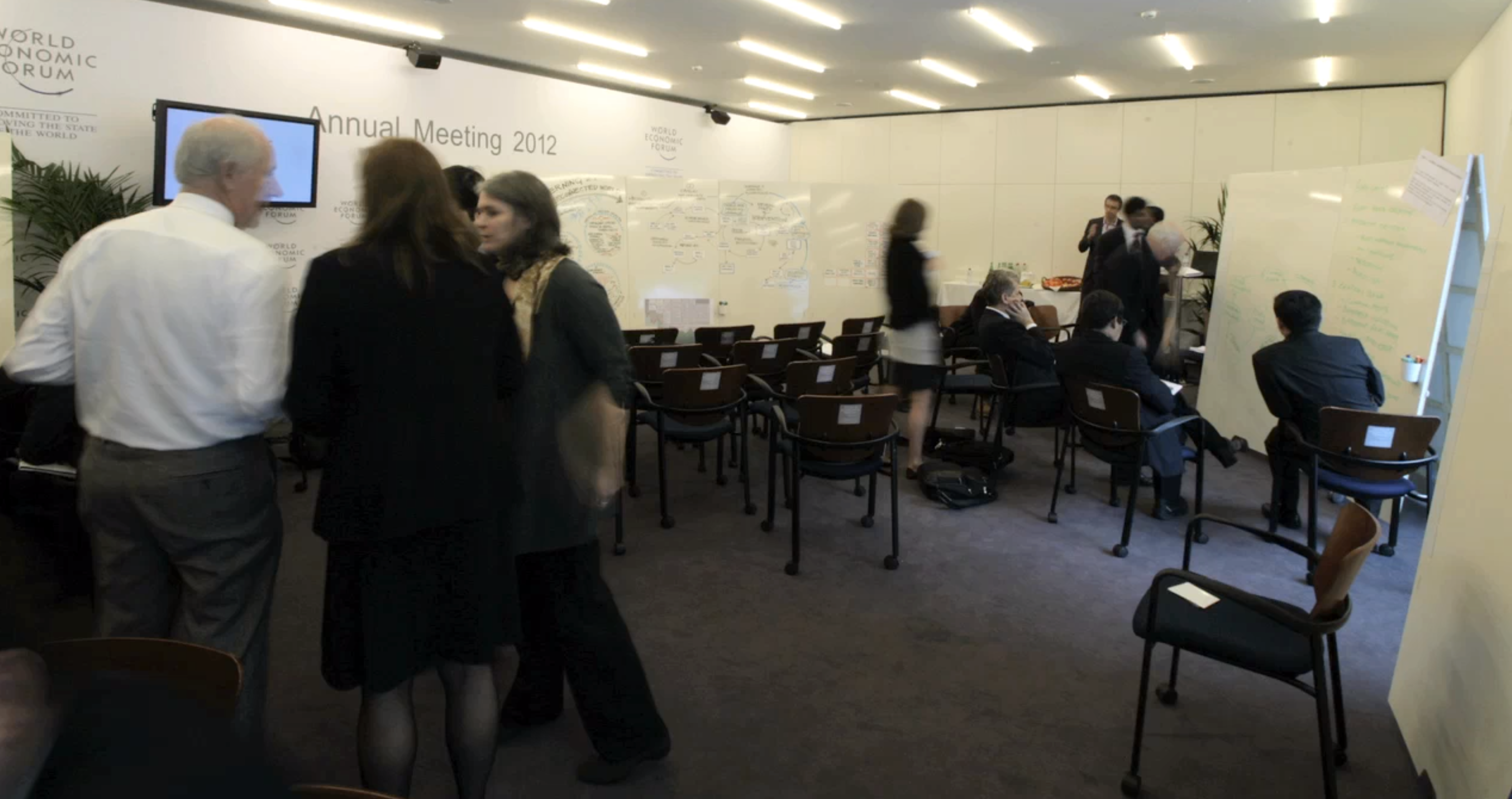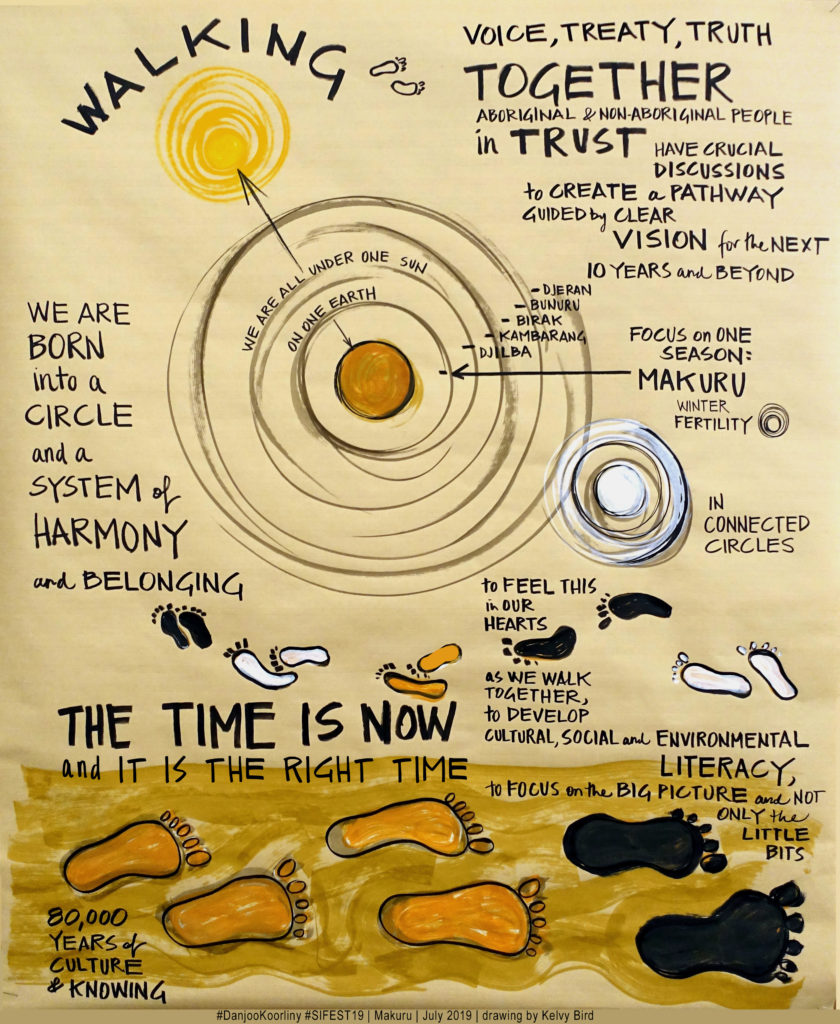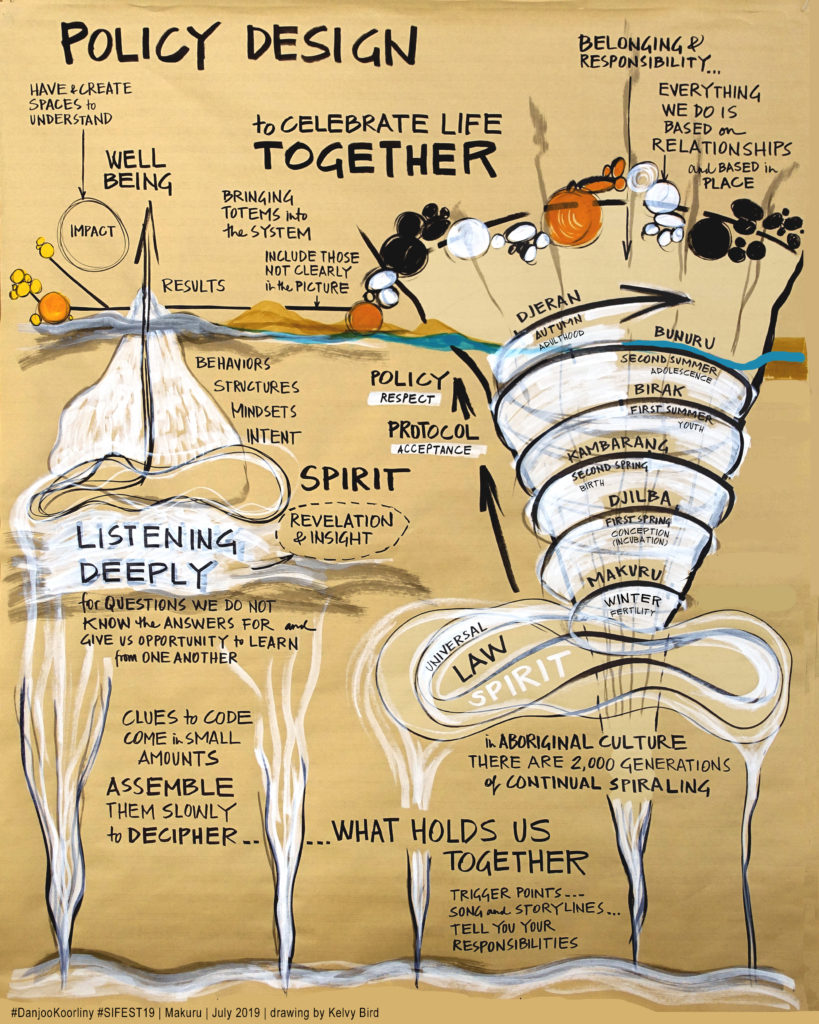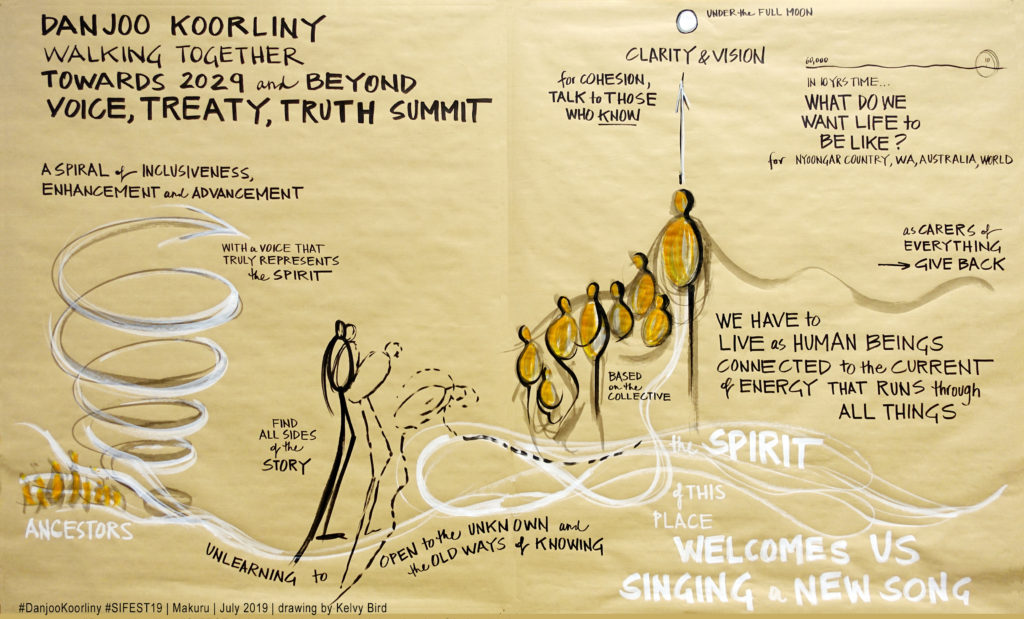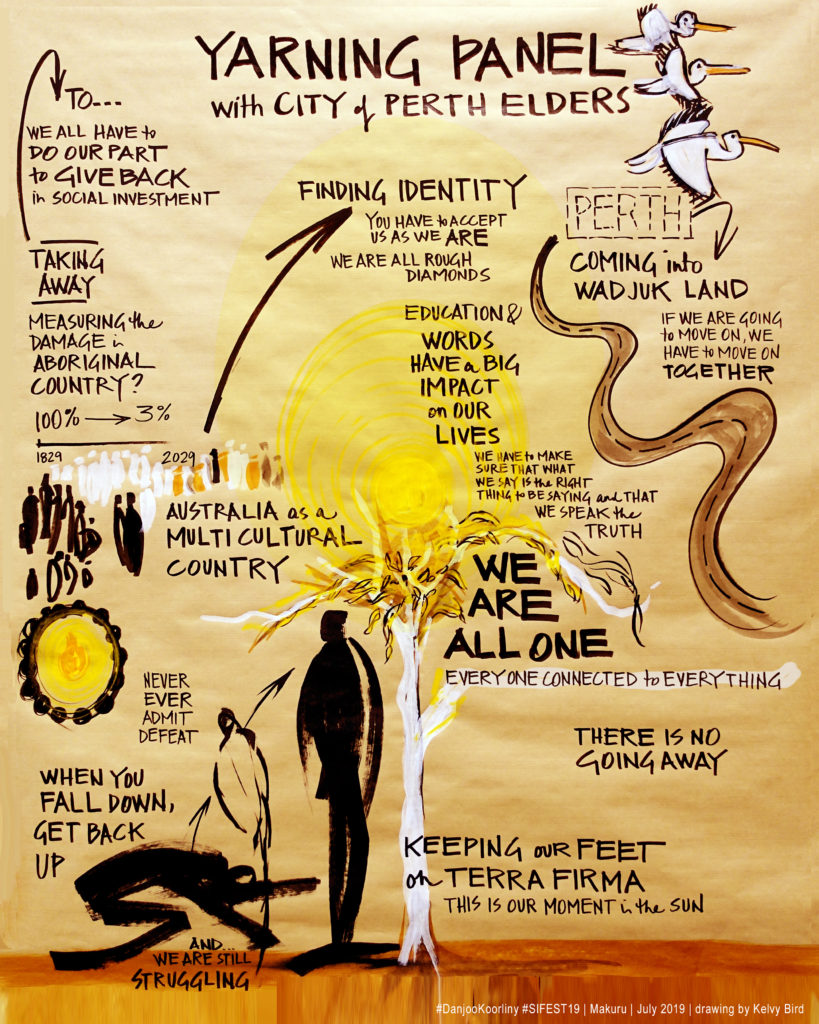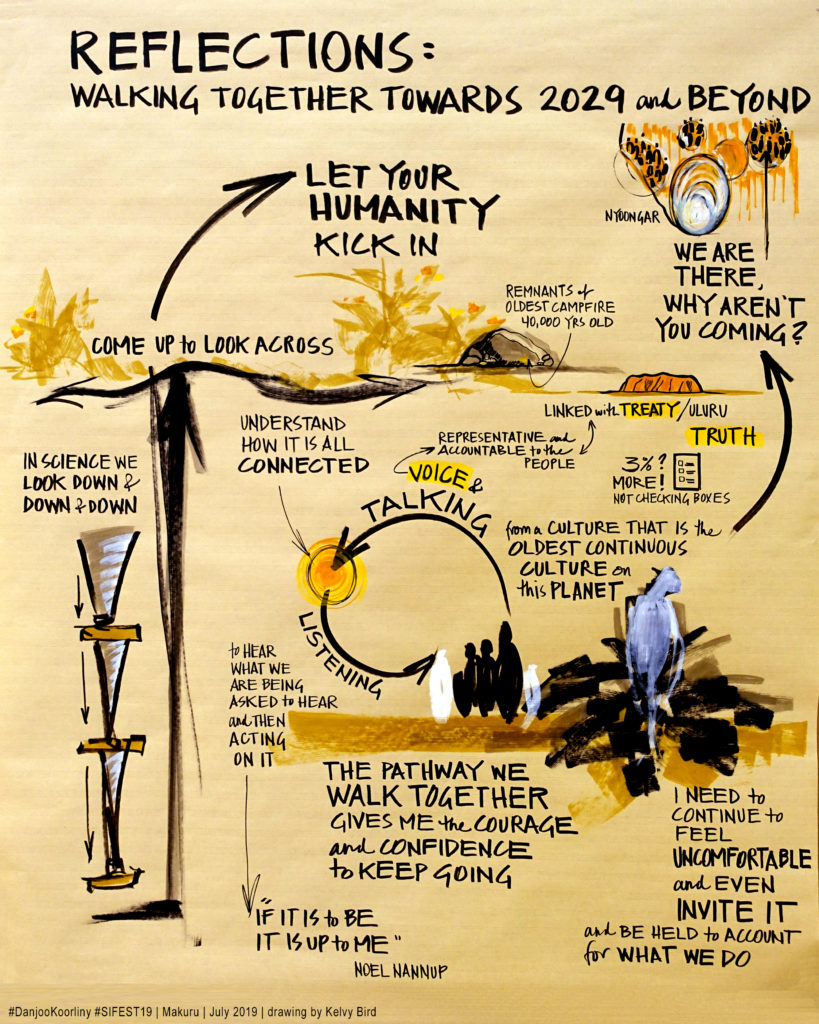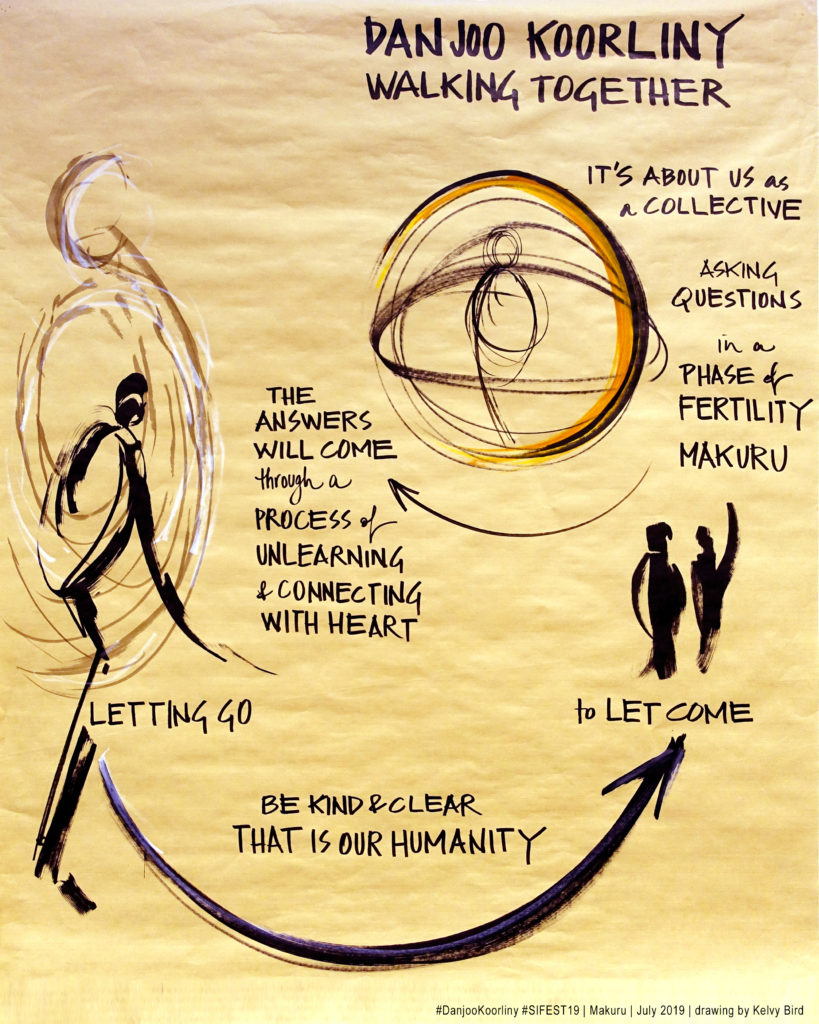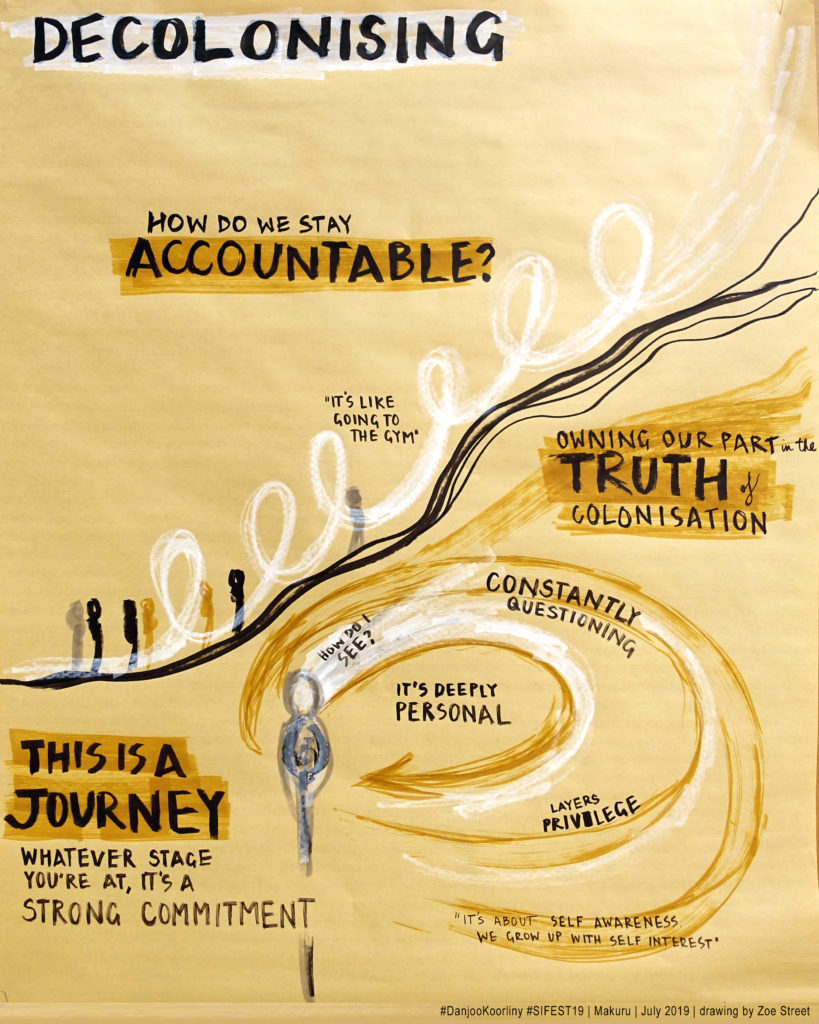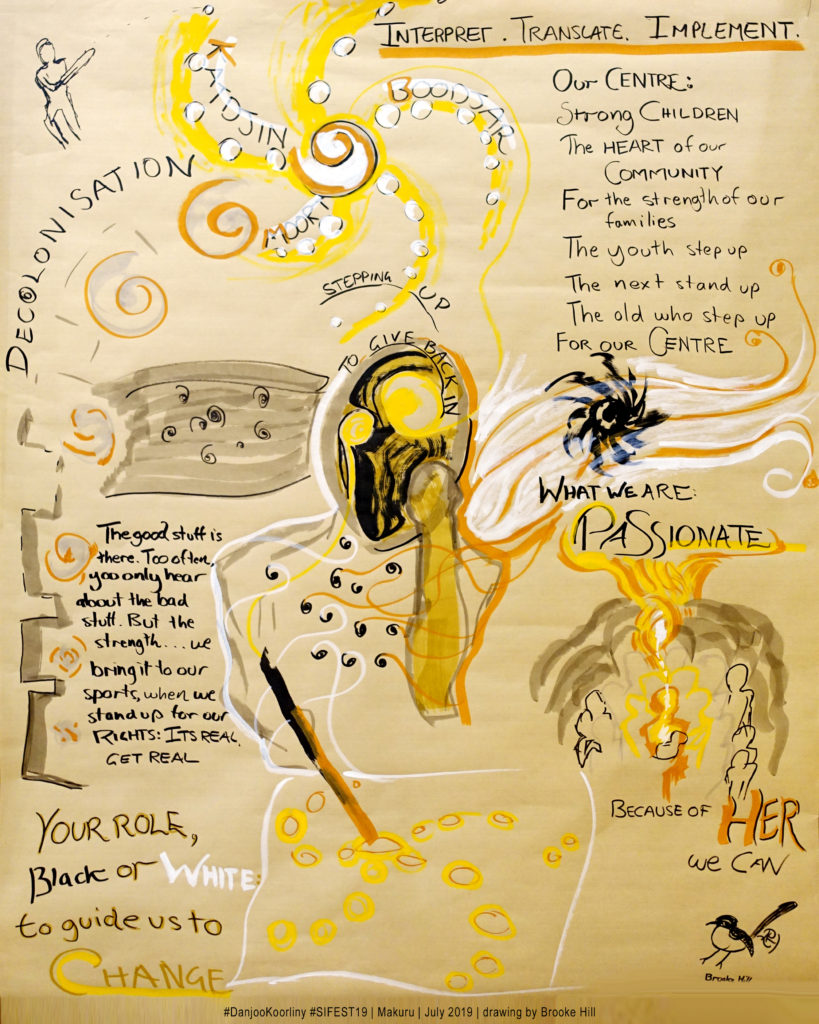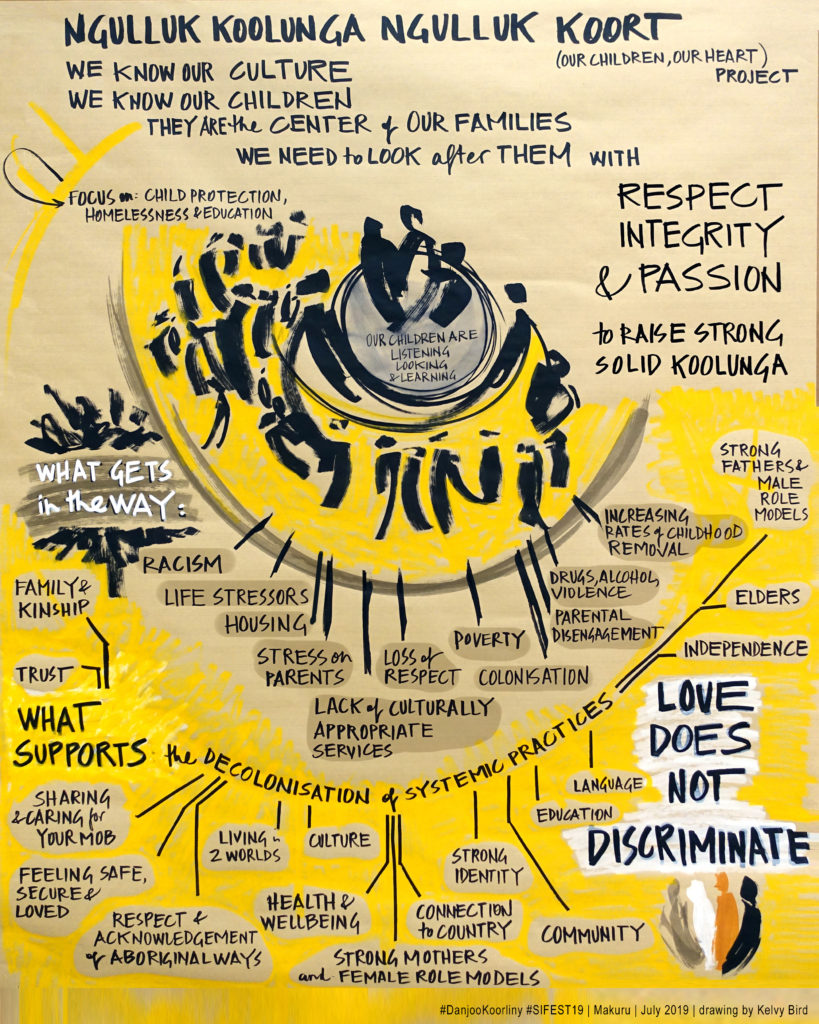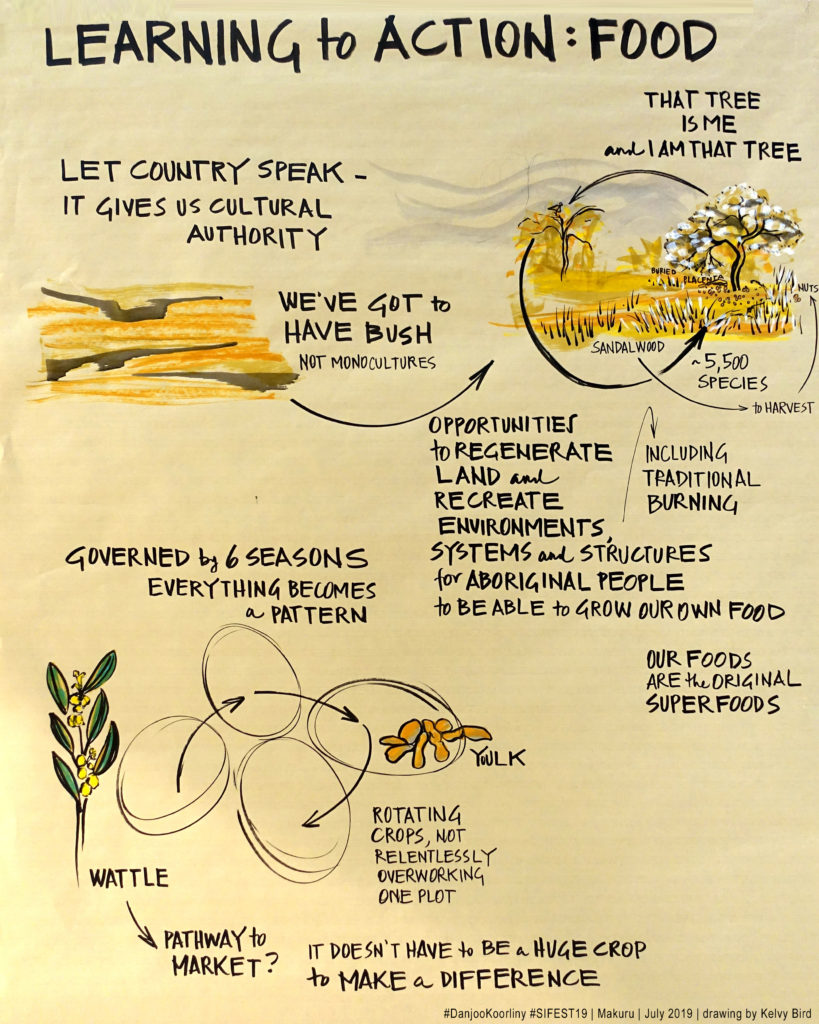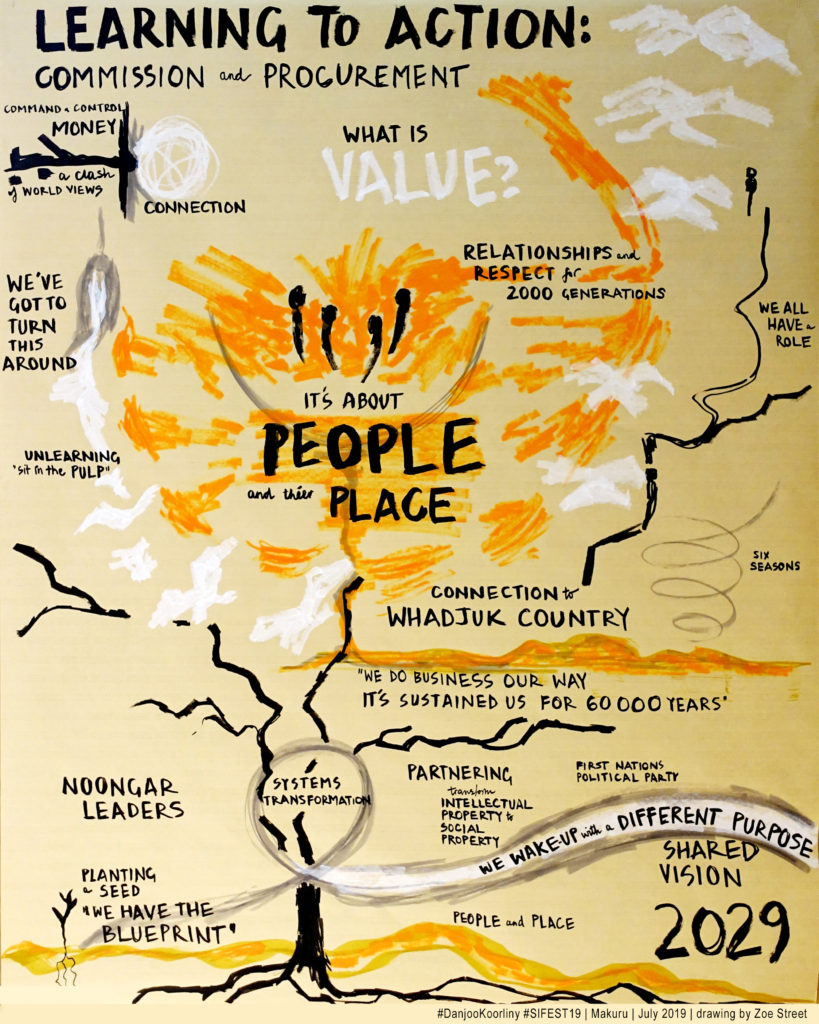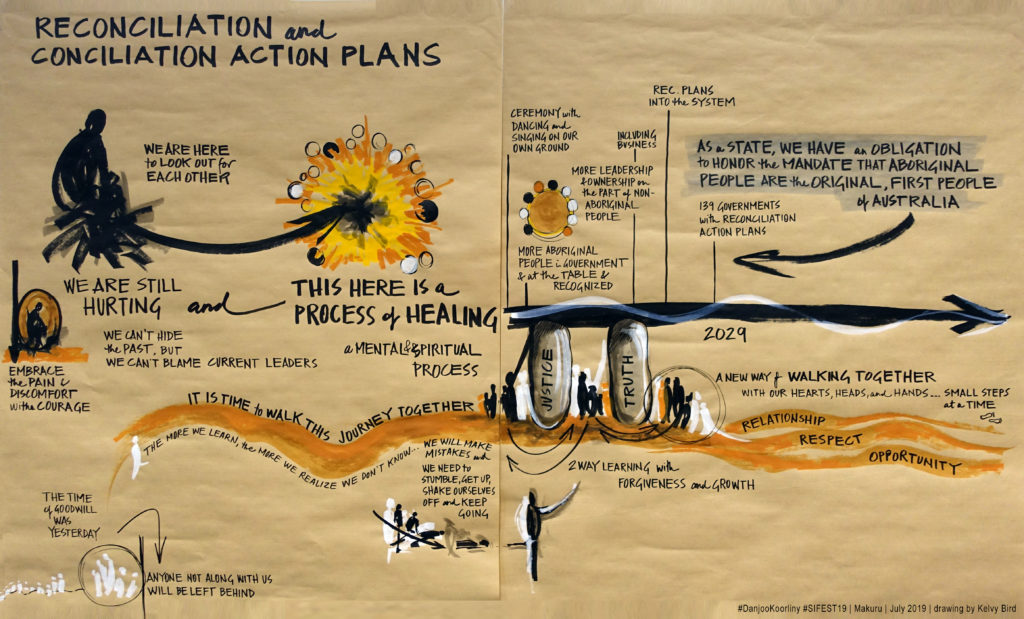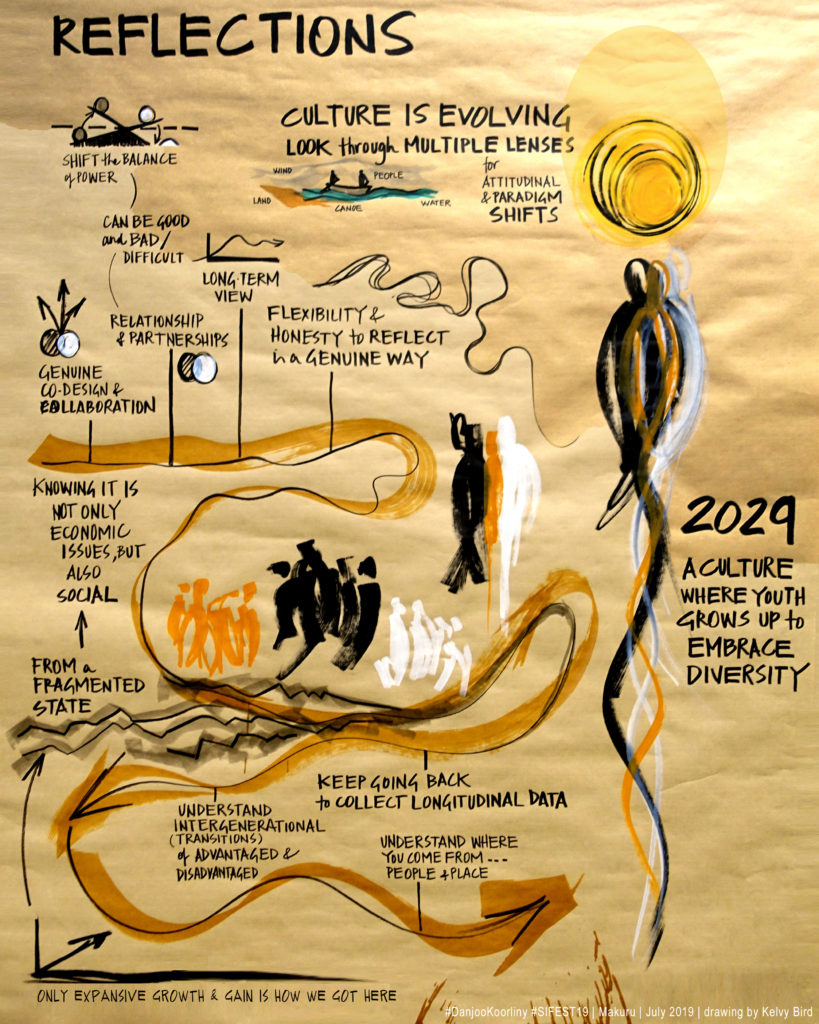What a session! What a year. What a decade. What a partnership.
On the eve of the 2019 winter solstice (for the northern hemisphere) Otto Scharmer interviewed me regarding Generative Scribing and the Power of Social Arts. It was the last episode of the year for Dialogues on Transforming Society & Self, a series of monthly interactive online talks. “With a variety of guests, stories and breakout sessions, these dialogues provide a space for coming together and sensing into inspiring examples of societal renewal.” Find a recap of our episode here, as well as previous interviews, on the Presencing Institute website.
After Otto and I conversed for about 20 minutes, we guided the community through a resonance process, attending our collective awareness to a series of “footprint” images created over the last decade of our work together. Find the slides in the gallery below. The resonance process was followed by virtual break out spaces, and then some group reflections at the very end of the 75-minute session.
Of note was how the power in my home completely shut down for about 5 minutes through the image “pulsing”. It was as if the energy of the entire group, and the focus on the images, was high enough to cause an outage! That is probably not the real explanation. But as the team scrambled on the back end to find out what happened, and as i desperately tried to reconnect, Otto picked up the presentation and there seemed to be minimal disruption. A few slides which would have been in that gap are added below. The resonance process started with the u.lab images and ended with increased time on the final synthesized image, which we refer to as “Solstice”.
Recording of the Session
Images Shared
Chat Questions with Responses and Resources
Jerry Michalski: Kelvy, did you at one time see a graphic facilitator in action, or did you start taking visual notes spontaneously?
I started in 1995 by joining a team of MG Taylor knowledgeworkers, to support a DesignShop for NASA wind tunnels. Scribing was one facilitative role in support of “releasing group genius”. I had met Matt and Gail when they came to visit Chris Allen in San Francisco, CA. I was working for Chris, who had a company called Consensus (focused on groupware) as his office administrator. I’d also been working on a collaborative art project with architect friends from college. When Matt and Gail were visiting out west, they saw the artworks and thought I’d be a good fit in the highly-collaborative sessions they were running. You can read more here about Matt and Gail’s work here, and a graphic talk by Andrew Park (inventor of those RSA Animate videos) on their processes.
I was also very involved in theater in high school, which is another kind of social, collaborative art. Many streams probably fed into the eventual practice of scribing.
Jerry Michalski: Were you scribing before arriving at MG Taylor, or did you learn it there?
I learned it there! And it took a loooong time. Everyone thought I could start right away, but it took me about two years to get comfortable drawing in front of people. Also, I am a slow learner.
tori craig : Kelvy, how do you sort out what’s happening among the group vs. your own interpretation/mindset?
Scribing is a balancing act between intuitive and cognitive abilities. Perhaps it’s like running constant mini “U”s… where we observe, sense, presence, and then have a quick check in internally on what is “in here” and what is “out there” and discern if there is alignment between the two (which are also really the same, but split out for the purposes of drawing.) Then a very quick shift into crystallizing the content into the drawing. Good question – and i will give it more thought and come back. People ask this all the time…
Nancy White : “A gift to offer, not a gift to have.”
I really like this quote. I think it sums up the approach.
Lily Martens: Kelvy what other art forms do you see that we can use to do this? Do you experiment with that as well?
Gosh – i would say all. I write a lot, journalling, personally and also for almost every professional situation i’m in. It’s a helpful tool for reflection, also requires discipline to do (like all art forms I suppose!)
barbara: For those with no artistic skills, how could we personally use scribing? I like the visual models but could not possibly produce one.
You can use scribing in any context to help people see. The difference between scribing and other visual art forms is that it is social – the content comes from a context of a group of people, rather than representing only one person’s views (though it’s common to scribe for one presenter of content, there is still an audience that participates in the overall context of the speaking…). Therefore, I’d say try in a safe environment first, perhaps with family or friends who are trying to think something through, and experiment where you can.
April Doner: Re: People with no artistic skills… just wanted to share one resource I love from a friend in the disabilities justice movement (scribing is a massive tool for accessibility in that field)… https://inclusion.com/product/hints-for-graphic-facilitators/
See also this program page for capacity development offerings from a trusted ecosystem of practitioners. There are a number of in person and offline opportunities to learn at very beginning stages.
Jerry Michalski: good book on drawing simply: Dan Roam, Back of the Napkin
Yes! I very much admire Dam Roam and all his books. Other great resources: David Sibbet, Dave Gray, Mike Rohde, and Brandy Agerbeck. And this book is really a massive and thorough compilation: The World of Visual Facilitation. And please please please remember this practice is as much—or more—about listening and sense making than it is drawing beautiful pictures. You can draw in a very basic way and still get the essence of what is being said, and help a group see, as long as you have the inner skills that combine with the skills of the hand.
Some books i recommend for inner capacity development: Dialogue: The Art Of Thinking Together by William Isaacs, The Fifth Discipline by Peter Senge and others, and the associated Fieldbook, of course Theory U Essentials by Otto ;), also Path of Least Resistance by Robert Fritz.
Maria Grette: I paint “from the future”. Paintings emerge from a meditative source and sometimes manifest in life up to years later. Is this related to scribing?
Yup! I can relate…
Hermann Funk: I see scribing as a valuable tool for prototyping, or am I wrong?
You are most definitely right. Especially system mapping, where you can clearly define places, stakeholders, processes of iteration over time…
Jerry Michalski: apropos other kinds of mapping, here’s ABCD in context: https://bra.in/2vmxPJ and Kelvy, in context: https://bra.in/8qa7AE
For the master of visual modeling, spend some time in Bryan Coffman’s website. He was one of my key early mentors in the field, and remains top of the charts for thinking and practicing scribing, especially in a strategic context.
Robert Wanalo: will the slides be available after this? 🙂
See above!
Nancy White: frozen Kelvy?
The computer in my home completely – yes, completely, went out! My computer went dark, internet down – all in an instant. While i scrambled to rejoin through my phone, the power came back on, but Otto had pick it all up and kept the process going, with barely a hiccup. Here is to team spirit!
Marilee Adams: If we consider an image like an answer, a visual answer, that makes me wonder from what questions/inquiries might a particular image/answer have emerged?
I love this question and need to sit with it.
Nancy White: The Ochre is a story that stays and stays with me
The story of ochre is here, for those who asked.
Emily Abramovich: Agree with April. I’m curious to know more about the physical process.
Oh wow – there is so much to share here. Scribing is quite physical. I’m not sure how to answer in a concise way. Maybe look at the program page to see the various pics and set up? I have been advocating lately that a great scribe can work on any surface in any condition: from room-surrounding white (dry erase) boards that wrap up to 40′ to a patch of sand on a beach – even to a Post-It note.
Jana, Deerfield OH WE, The World: why just these colors? why not purple or deep blue? Deb: How do you decide what colors to use? (Or is it just dependent on what you have available at the time?)
Well…… color is so critical in my mind, as it’s a subtle influencer and can say a great deal in relative silence. It’s a powerful medium. The colors i use with the Presencing Institute are distinct, as we chose the pallet at one point in time for the website, and then used more broadly in our design and communications. This translated over into my scribing for u.lab and key ecosystem gatherings. That is probably why they feel so uniform in the drawings above. There are a number of us in PI working on various products, independently, and color palette has helped with our consistency.
And, there is so much more on this. See the end of this post for some color coding info in relation to that one drawing. I will try to get permission to share a chapter I recently co-authored with Holger Nils Pohl called Using Color, in a recently published book: The World of Visual Facilitation.
barbara: I sense a groupthink that perhaps is blinding people to the actual difficulty of the current situation
I appreciate this comment. As i think you were experiencing in our process, the self-selected social field—as we had on the call—can sometimes create a series of “follows”, where there can be a snowballing effect of agreement, and a difficult condition in which to bring in an “oppose”. (See above relevant reference to William Isaac’s book on dialogue.) This happens in scribing too, where one mark can follow another, and we stop listening to the discord that ALSO has necessary information in it, as balance. It’s key to listen for the full range of inputs, regardless of proportion. It offers correction. As has your comment.
It’s easy for a scribe to get caught up in polite downloading Otto’s Conversation Field Level 1, because it’s a more comfortable place to be in, especially when immersed in the real-time pressure of live drawing. But it’s critical to be able to hold a steady container and support a social field shift into Level 2: Debate, which is where discord comes in. If you can’t handle this, and then also listen for shifts to Level 3: Dialogue, and the Level 4: Collective Creativity…. then you as a scribe, or facilitator, you will not really help balance out the stuck reinforcing feedback loop a group is experience.
I guess it boils down the overall maturity and strength of the container of the group itself…. (which would have been the 250 people on our call), and time together, to allow for field shifts that can enfold difference.
Sherrill Knezel: Another question that surfaced…what can we or are we willing to let go of in order to serve the social field?
Ego.
trishbroersma: Tips for planning visual space with a new topic or new group?
Hm. A LOT goes into planning. Perhaps read this post as a start to get the scope? I’m not sure, though, if this is what you meant by the question…
angele: are you also continuing your painting in the studio?
Well…. not really. I have a small studio that is ready and waiting. It’s one of my 2020 intents, to start up again – combined with an intent to travel less for work and stay more local.
sylvie: Maybe this is unrelated but would Kelvy want to share where her name comes from?
Ha! “Kelvy” comes from McKelvy, which was the maiden name of my grandmother, Margaret McKelvy Bird. It’s obviously then from her parents, Robert and Florence McKelvy.
Elizabeth Carney: Hoping the images can be shared? Susanne Maria Weber: Can we please have prints of those wonderful images?
You can see the images above, and click on them for a higher resolution version you can print.
Veronika: Are there any resources how to start learning gernerative scribing?
Well, for starters, my book!
